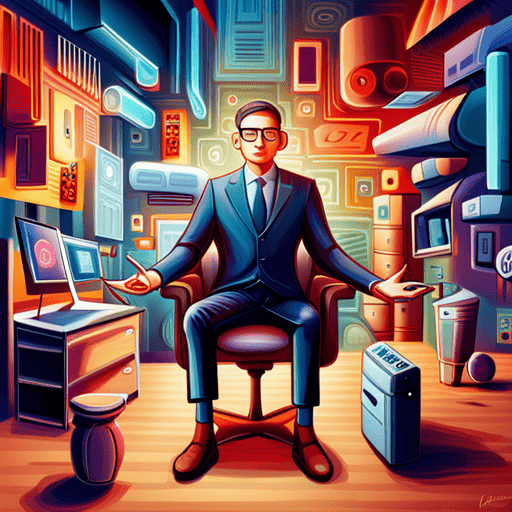What is Generative AI and What It Can Do in 2024
In the world of artificial intelligence, generative AI has become an increasingly buzz-worthy concept recently. But what is it? Simply put, it is the ability of AI to create content guided by human input. While some might perceive this as a threat to human creativity, others see it as a tool that can enhance and revolutionize various industries. In this blog post, we’ll delve deeper into what generative AI is and what it can accomplish, with a focus on image, video, and text generation.
What Is Generative AI
So what is Generative AI, also known as creative AI?
It is a subset of artificial intelligence that involves creating content guided by human input, typically in the form of text (Prompts). This type of AI uses algorithms to analyse and learn from patterns in data and produce original content such as images, videos, or text. It can generate new ideas and concepts based on its training data, making it a powerful tool for creative and innovative tasks.
How it differs from other types of AI
Generative AI differs from other types of AI primarily in its capability to produce new and original content. Unlike task-oriented AI, which performs specific tasks based on input data, generative AI uses its learned patterns to create something unique. Other types of AI, such as predictive AI, use data to predict outcomes, but they do not generate new content. Similarly, prescriptive AI suggests actions based on data but doesn’t create anything new. On the other hand, generative AI, with its ability to create new ideas and concepts, opens up a world of potential for creativity and innovation in various fields, including art, music, writing, and product design.
Examples of generative AI in everyday life
Generative AI is all around us, even if we don’t realize it. For example, the recommendation systems on platforms like Netflix and Spotify use generative AI to recommend personalized content based on our preferences.
Generative AI tools are also to be found in more creative aspects. Jasper Art and Midjourney uses generative AI to turn text inputs into realistic looking images or digital art.
Have you ever come across AI chatbots on Ecommerce stores? They utilize generative AI to learn from past conversations and generate responses that simulate human-like conversation. This advancement presents exciting opportunities for customer service and personal assistants.
The role of data in generative AI
Data is the lifeblood of generative AI. The quality and extent of data used in training significantly impacts the AI’s ability to create high-quality and meaningful outputs. AI learns from the data it’s fed, therefore having a diverse and comprehensive dataset is crucial for generating unique and relevant content.
Different generative AI models can produce varied results, even with the same input. This is because each model interprets data differently based on its structure, algorithms, and learning mechanisms. For example, a model trained on classical music will generate different content from one trained on hard rock, even with the same input. Therefore, selecting the right model and training data is crucial for desired outcomes.
Personalizing AI-generated content
While all AI tools start with a foundational base model (dataset) for content creation, most tools now offer the possibility to further personalize by integrating your unique data. This feature allows you to shape the AI-generated content so that it reflects your style, tone, or desired aesthetics more accurately. Whether you want the AI to write, sound, or look more like you or anything you prefer, adding your data can help achieve that. The extent of this personalization varies from tool to tool, but it’s becoming an increasingly common feature in the landscape of generative AI. This trend indicates a shift towards more personalized and user-specific AI outputs, which can improve the relevance and appeal of the generated content.
Types of AI Tools
Now that we’ve set the stage with a fair understanding of what generative AI is and the integral role data plays in its operations, let’s delve a bit deeper. There are many types of generative AI tools, each with its unique capabilities and applications. Understanding these different types is a great start to understanding the potential of generative AI.
AI Image Generation Tools
AI image generation tools have brought about a revolution in digital artistry and graphic design. These tools, leveraging the power of generative AI, can create new images from scratch, often producing results that can be close to real-life photographs. Imagine being able to create a photorealistic image of a landscape that exists only in your imagination, or generating a portrait of a person who doesn’t exist!
AI image generation can provide invaluable assistance in various projects, like graphic design or advertising, where generating large amounts of detailed, realistic visuals can be time-consuming. The potential of AI image generation knows no bounds, this is pushing the limits of creativity and reshaping the art and design landscape.
Examples of AI Image Generation tools
Let’s have a look at some popular AI tools that enable you to take advantage of AI image generation,
Midjourney is an innovative tool that leverages generative AI to create captivating images. It takes content generation to new heights, producing high-quality visuals based on user input and preferences.
Dalle-E, from OpenAI, is an AI tool that generates images from text. It’s a game-changer, enabling artists and designers to bring their wildest imaginations to life just by describing them in words.
Jasper Art is an AI tool known for creating stunning digital artwork. Its ability to generate visually compelling pieces from simple inputs makes it a valuable tool for digital artists and creatives.
The best part is that you get full access to this tool when you buy Jasper AI.
These tools only scratch the surface of what generative AI can accomplish when it comes to image generation. I have a much more in depth article about it if you want to dig deeper.
AI Video Generation Tools
Utilizing the power of Generative AI, tools can synthesize entirely new video content, modify existing footage, or even create realistic animations from simple textual descriptions. The functionality of AI video generation extends from creating engaging marketing videos, to developing lifelike CGI for movies, and even generating educational content.
While AI video generation is still in its early stages, these groundbreaking tools have already proven their potential to complete real work. Let’s dive in and explore some popular examples of how AI is transforming video creation!
AI-Generated AI Avatars
Text to speech (TTS) technology has been around for a while, but AI video generation tools can take it one step further by creating videos that can simulate a person’s voice and expression. These AI Tools can create videos of people speaking and make it look convincing. With the use of AI video generation tools, it is possible to quickly create and edit videos for marketing, e-learning, and other industries, without the need for actors or time-consuming recordings.
Although many AI tools offer a wide range of pre-designed avatars, some also provide the option to personalize your AI representation. With these tools, you can effortlessly and swiftly generate videos of yourself for various purposes.
Example of an AI-generated video using HeyGen
AI video generation tools are changing the game in content creation. By harnessing the power of generative AI, these tools offer endless possibilities for businesses and educators. AI video generation is an exciting frontier with a promising future. Get ready for a world where content creation is more accessible, efficient, and personalized than ever before.
AI Video Editing Tools
Moving beyond generating videos, AI can also help edit them. AI-powered video editing tools are transforming the video production landscape, making the process more streamlined and less labor-intensive. For example, Runway can assist or even automate tasks such as:
- Cutting and trimming clips,
- Adjusting lighting and colour
- Adding special effects
- Finding the best scenes
- Remove an object from a clip.
But using AI to assist you with video editing is not only for the pros. Online video editors such as Wave.Video and Flexclips have made AI video editing features super accessible on their platforms. Their platforms are incredibly user-friendly, especially when compared to professional software like Adobe Premiere or Final Cut. This makes them ideal for content marketers and anyone else who wants effortless access to AI assisted video editing.
AI Tools for Content Marketing
In the realm of content marketing, AI is not just a futuristic concept – it’s a game-changer that’s already transforming the way content is created, distributed, and consumed. Key players like Jasper AI and Content at Scale are leading the way with AI content writing tools that generate content from your inputs. These tools utilize advanced algorithms and machine learning techniques to mimic human-like writing styles, ensuring your content remains engaging and relatable for your audience.
Moreover, the integration of AI in video editing has drastically sped up content production for social media. Imagine having an AI-powered tool that can effortlessly trim clips, adjust lighting, add effects, and more in mere minutes. Some AI editors can even suggest editing ideas based on the videos in your project. This saves valuable time and allows marketers to focus their efforts on strategizing and innovating.
AI has already demonstrated its effect in content marketing. However, it’s important to remember that while AI can save you time in content marketing, it won’t create exceptional content unless you guide it properly. So make sure you get familiar with the AI tools you end up choosing, as your inputs still dictate the content output.
AI Writing Tools
I would imagine that most content writers have experienced writer’s block. You sit there in front of your computer with your favourite coffee mug next to you, ready to crank out another blog post, but you can’t come up with any ideas.
Well, you’re in luck AI writing tools are here to help you. I have lost count of the number of times when I have been stuck trying to figure out how to word the next section of a blog.
I mainly use Jasper AI for writing my blogs now, and when I’m lost for ideas, I simply ask it to write the next paragraph for me. Using the prior sections and the general inputs, it tries it’s best to come up with something.
Often, it may not meet my standards, but it provides a valuable baseline to begin rewriting. Occasionally, the section sounds so impressive that I decide to keep it and move on. With the assistance of Jasper AI, I can create higher-quality content at a significantly faster pace—approximately 2–3 times faster than before.
No matter if you’re writing all your content yourself or have hired writers, it will benefit you to spend some time learning about AI writing tools.
Conclusion:
Generative AI has come a long way and has made considerable advances in the field of content creation. Image, video, and text generation AI tools provide significant benefits, such as increasing creativity and productivity. However, the debate around replacing human creativity with AI-generated content remains.
It’s essential to understand that this technology is not a replacement but an enhancement. Generative AI is not intended to replace, but rather, to augment the human touch. Businesses should aim to use generative AI tools as an opportunity to create engaging content quickly, efficiently, and with fewer errors. As the technology of generative AI continues to evolve, we can expect it to provide even more incredible possibilities in the future.
Further resource:
If you are eager to know more about the more technical aspects of Generative AI, then I would recommend reading this Wiki page.





